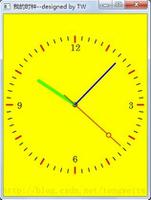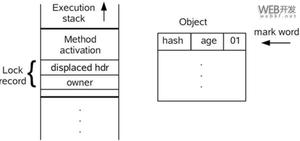崔庆才都推荐的python基础学习资料,难道你还不来学习吗?
![崔庆才都推荐的python基础学习资料,难道你还不来学习吗?[Python基础]](/wp-content/uploads/new2022/20220602jjjkkk2/2758211340_1.jpg)
## python 基础 :数值,链表,字符串

很多网站上都有python教程,不一而足,本篇教程会结合我在实际开发过程中遇到的问题,总结出很多有意思的小tricks。我会把你当做python小白来看待,所以不要心急和担心,一步步的讨教一下python的招式。
### 数值
python是一门动态语言,它可以在运行时声明和使用变量,同时它也是一种强类型的语言,这一点有别于PHP,python会提供强制类型转换的方法,与java类似,但是PHP的话编译器会自动识别你所运用的变量到底是哪种类型。
**注意**:‘123’可以通过int()来转化成123,但是别的非数字字符串就不可
```
更准确来说,它也满足遇强则强的类型强制转换规则,最明显的就是在两个数相除的时候。
```
同时python也是支持复数运算的一门语言,虚部由一个后缀"j"或者"J"来表示。带有非零实部的复数记为"real+imagj",或者通过`complex(real, img)`函数创建。记得以前c++中最经典的一些题目就是重载+运算符,使其可以支持复数运算。来看几个例子:
```
>>> 1j * 1J
(-1+0j)
>>> 1j * complex(0,1)
(-1+0j)
>>> 3+1j*3
(3+3j)
>>> (3+1j)*3
(9+3j)
>>> (1+2j)/(1+1j)
(1.5+0.5j)
```
假设复数为z,那么它的实部就为z.real 虚部就为z.imag
```
>>> a=1.5+0.5j
>>> a.real
1.5
>>> a.imag
0.5
```
**注意**
不能将复数转化成常用的变量类型。你可以用abs函数取模。
##### trick:
`在shell交互模式下,最近一次的计算结果保存在变量_(下划线)中,这样就可以很方便的进行运算操作。`
### 字符串
python里面有一个string的module,我们先从最基本的开始讲起。
想必你对转义字符并不陌生,在python中也保留了这一转义传统,加入你在字符后面打上,说明接下来的字符串是之前的逻辑后缀:
```
>>>hello = "This is a rather long string containing
several lines of text just as you would do in C.
Note that whitespace at the beginning of the line is
significant."
print hello
```
将得到
```
This is a rather long string containing
several lines of text just as you would do in C.
Note that whitespace at the beginning of the line is significant.
```
那么很明显,‘
’就是我们熟悉的换行,是逻辑继续符号。具体的输出格式你需要根据自己的shell跑跑看。
##### trick:
`如果我们创建一个“行”("raw")字符串, n序列就不会转为换行,源码中的反斜杠和换行符n都会做为字符串中的数据处理`
```
hello = r"This is a rather long string containing
several lines of text much as you would do in C."
print hello
```
你将得到:
```
This is a rather long string containing
several lines of text much as you would do in C.
```
但是:
```
r allow to be interpreted as the two characters and t
也就是说:r‘ ’得到的是
```
`如果你还是嫌太麻烦,那么就用三引号(""")来包裹字符串,这样的话两个三引号之间不需要进行行尾换行处理。`
`同时,就像你想的那样,字符串可以相加可以乘以一个数字进行成倍的复制,更令人吃惊的时两个字符串的值可以自动的粘黏在一起:`
```
>>>"str""ing"
>>>"string"
```
`但是这个功能仅仅针对字符串常量。`
接下来要讲到的一个字符串的功能跟python中的数组有莫大的关联,其实这句话是废话,一般而言字符串也不过就是一个储存在内存中的字符数组,但是我这句话的本意是想表达,python的数组,更严格来讲是list,有一个很强大的功能,那就是`切片`。
初学者可能还无法领会切片使用的奥义,那么我们来举几个例子你就能体会为什么这个功能是很多人选择python的理由。
```
+---+---+---+---+---+
| H | e | l | p | A |
+---+---+---+---+---+
0 1 2 3 4 5
-5 -4 -3 -2 -1
上图展示了python列表下标的情况,python的list可以进行负索引操作:
>>> word[-1] # The last character
"A"
>>> word[-2] # The last-but-one character
"p"
>>> word[-2:] # The last two characters
"pA"
>>> word[:-2] # Everything except the last two
"Hel"
切片操作有一个很有用的不变性:
>>> word[:2] + word[2:]
"HelpA"
>>> word[:3] + word[3:]
"HelpA"
```
所以现在你回头看看你以前熟悉的那些硬语言,没有哪一种是可以像这样操作数组或者列表的,这样就给数据结构和算法提供的莫大的方便。链表的操作跟上述的操作道理是一样的。这里不赘述了。
###### 下面我们来看看string module
在介绍python中的核心概念module之前,相比你们都尝试过import这个功能,没错,python的强大之处就在于它的第三方包,这些包在python简洁的基础之上又进行了整理,使得语法更加的简单明了,更加地人性化。这里我们以string这个module为例子,介绍一下有关module的使用,希望大家可以举一反三。
无论对于哪一种语言来讲,字符串的操作是重中之重,为此大部分语言都将其作为一个单独的类或者包列出来,提供对字符串操作的方法。python也不例外。
首先打开你的终端(linux用户,windows就cmd吧),分别输入以下命令:
1 python
2 import stirng
3 dir(string)
会出现以下一大坨:
```
["Formatter", "Template", "_TemplateMetaclass", "__builtins__", "__doc__", "__file__", "__name__", "__package__", "_float", "_idmap", "_idmapL", "_int", "_long", "_multimap", "_re", "ascii_letters", "ascii_lowercase", "ascii_uppercase", "atof", "atof_error", "atoi", "atoi_error", "atol", "atol_error", "capitalize", "capwords", "center", "count", "digits", "expandtabs", "find", "hexdigits", "index", "index_error", "join", "joinfields", "letters", "ljust", "lower", "lowercase", "lstrip", "maketrans", "octdigits", "printable", "punctuation", "replace", "rfind", "rindex", "rjust", "rsplit", "rstrip", "split", "splitfields", "strip", "swapcase", "translate", "upper", "uppercase", "whitespace", "zfill"]
```
这些就是string这个module里面所包含的默认属性以及方法(属于类以级别,可按照java中的类方法理解),那些奇奇怪怪的下划线看不懂不要紧,下一篇文章我会解释。如果想知道其中某个函数比如find的用法,请在终端这么做:`help(string.find)`,那么就会出现:
```
Help on function find in module string:
find(s, *args)
find(s, sub [,start [,end]]) -> in
Return the lowest index in s where substring sub is found,
such that sub is contained within s[start,end]. Optional
arguments start and end are interpreted as in slice notation.
Return -1 on failure.
(END)
```
它会给你一个抽象方法和一个具体方法,如上,星号看不懂也没有关系,下章会讲,仅仅先当做参数。
```
注意:
在终端中,(END)是高亮的,你阅读完了以后,直接按"q",就会返回到>>>提示符,可以继续操作。不然这个既不想vim也不像emacs的东西会搞得你头大。
```
那么string中常见的几个函数用法给大家列一下,具体情况具体help
```
string.atof(s)# Convert to float
string.atoi(s)# Convert to integer
string.atol(s)# Convert to long
string.count(s,pattern)# Count occurrences of pattern in s
string.find(s,pattern)# Find pattern in s
string.split(s, sep)# String a string
string.join(strlist, sep) # Join a list of string
string.replace(s,old,new) # Replace occurrences of old with new
```
`高度预警:`
函数"atoi"可以把string类型变量转化为int类型变量,但是仅限于转数字字符串类型
```
s="string"
s=string.atoi(s)#错误
s = "123"
s=string.atoi(s)#正确
```
推荐一下我建的python学习交流扣扣qun:850973621,群里有免费的视频教程,开发工具、
电子书籍、项目源码分享。一起交流学习,一起进步!



作者:牧师Harray
链接:https://www.jianshu.com/p/34b111bf27ce
来源:简书
著作权归作者所有。商业转载请联系作者获得授权,非商业转载请注明出处。
以上是 崔庆才都推荐的python基础学习资料,难道你还不来学习吗? 的全部内容, 来源链接: utcz.com/z/537703.html







